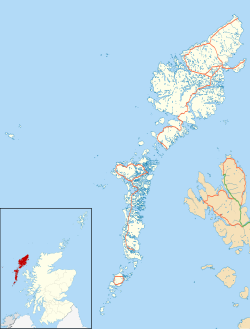South Galson
| |
|---|---|
 View of South Galson | |
Location within the Outer Hebrides | |
| Language | Scottish Gaelic English |
| Civil parish | |
| Council area | |
| Lieutenancy area | |
| Country | Scotland |
| Sovereign state | United Kingdom |
| Post town | ISLE OF LEWIS |
| Postcode district | HS |
| Dialling code | 01851 |
| Police | Scotland |
| Fire | Scottish |
| Ambulance | Scottish |
| UK Parliament | |
| Scottish Parliament | |
South Galson is a settlement on the northwest coast of the Isle of Lewis in the Western Isles of Scotland. It is 11 km southwest of Port of Ness. The Galson Primary School closed in 1996. [1] The populations of North Galson, South Galson, and Melbost were 149 in 1999. [2]
